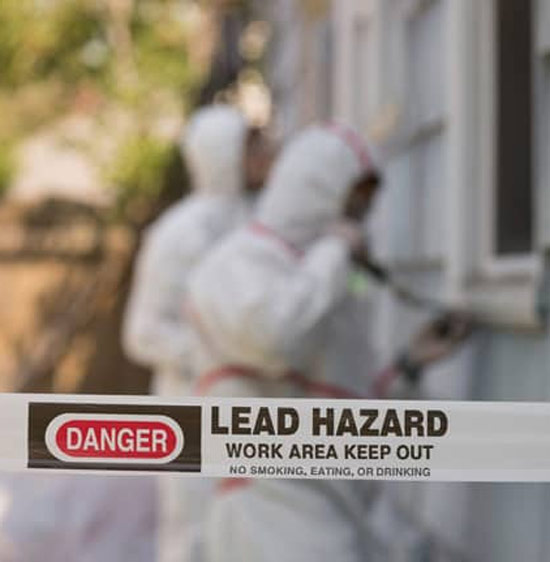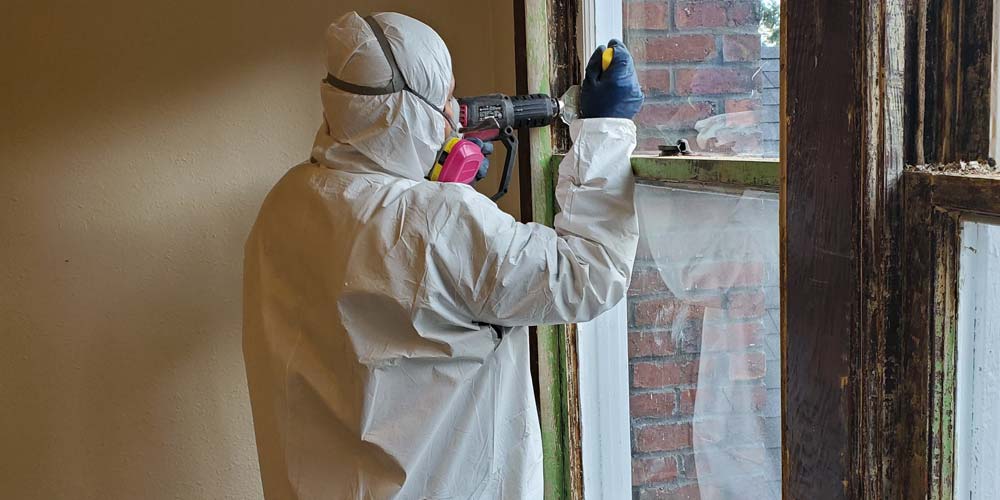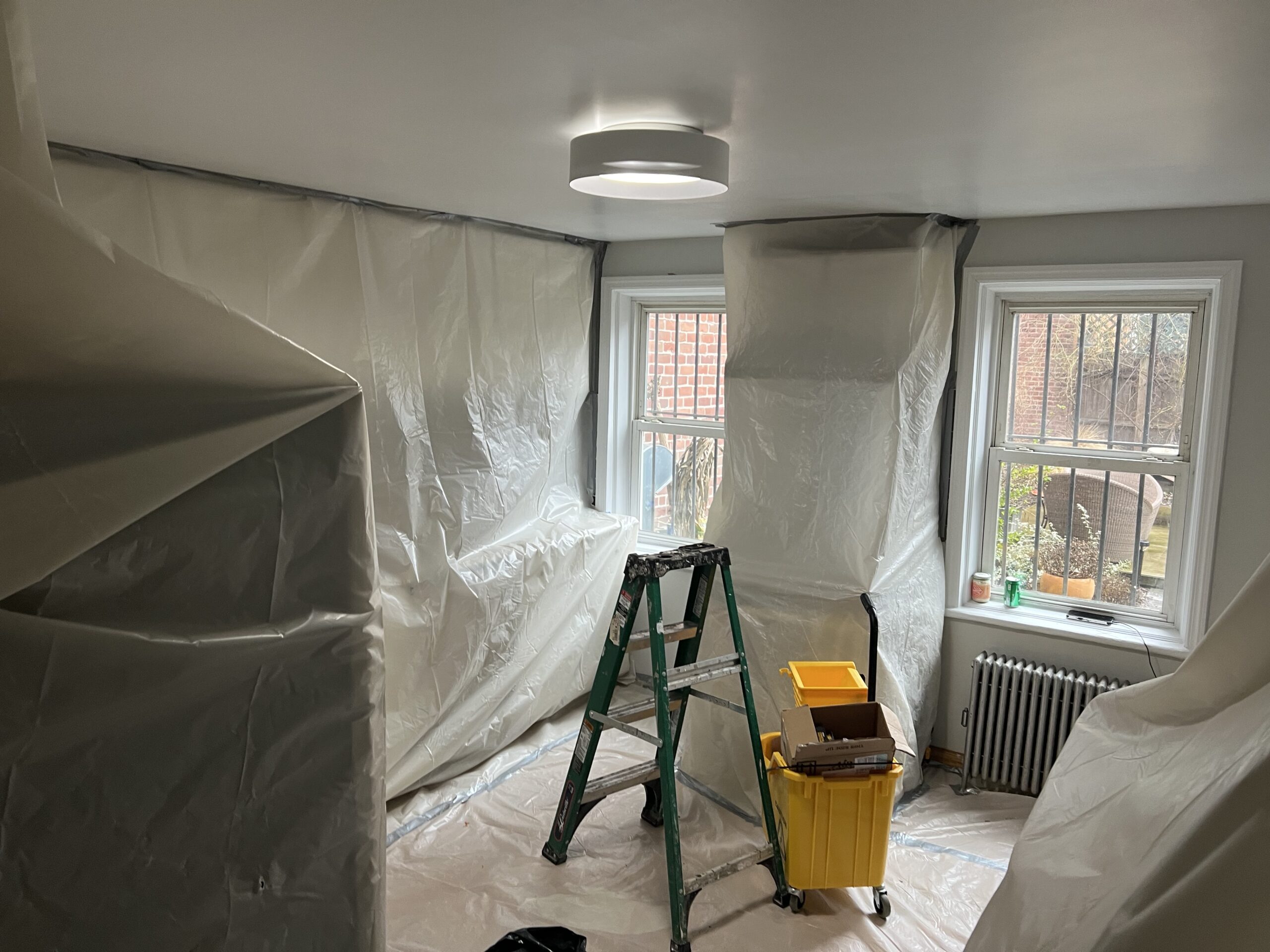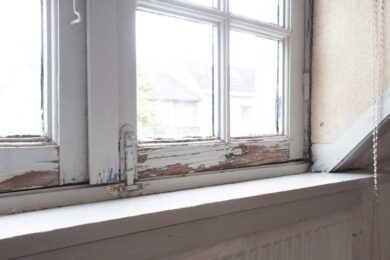Relied On Lead Paint Removal Company-- NYC's Premier Lead Reduction Service
Relied On Lead Paint Removal Company-- NYC's Premier Lead Reduction Service
Blog Article
Ideal Practices for Guaranteeing Safe and Thorough Lead Infraction Reduction
Addressing lead violation reduction calls for a multi-faceted method to make sure both security and compliance. It's the final clearance procedure, entailing complete assessments and lab testing, that truly validates a lead-free atmosphere, making certain lasting security. How do these techniques adjoin to ensure comprehensive lead reduction?

First Evaluation
Conducting a first evaluation is an important initial action in lead violation reduction. This phase incorporates an in-depth evaluation of the property to recognize the presence, level, and particular areas of lead-based risks. Certified professionals, such as licensed lead inspectors or run the risk of assessors, should do a comprehensive website inspection, using devices like X-ray fluorescence (XRF) analyzers to accurately identify and measure lead focus in paint, dirt, soil, and water.
The analysis must likewise consist of a review of the building's background, previous reports, and any type of issues or health problems reported by owners - Lead Removal Contractors. Documenting the findings diligently is important, as these records create the basis for developing an effective reduction approach. A comprehensive evaluation additionally entails sampling and lab evaluation, which are essential to confirm the presence of lead and guide subsequent activities
Moreover, it is essential to interact the results transparently to all stakeholders, consisting of homeowner, tenants, and regulatory authorities. By guaranteeing that the preliminary evaluation is carried out with accuracy and rigor, experts can lay a solid structure for a targeted and efficient lead reduction procedure, ultimately guarding public wellness and guaranteeing compliance with regulatory requirements.
Proper Containment
Proper control is crucial to stop the spread of lead contaminants during reduction activities. Properly handling control minimizes the threat of lead dirt and debris migrating to non-work areas, thus guarding both the atmosphere and individuals outside the prompt work zone. To accomplish correct containment, a closed barrier of plastic sheeting have to be developed around the workspace, making certain all seams and sides are securely sealed. Lead Removal Contractors. This obstacle needs to expand from floor to ceiling and be taped to protect against any leaks.

Routine evaluations of the control area are necessary to inspect for violations or weak points in the barrier. Any kind of identified concerns ought to be quickly resolved to preserve the integrity of the control. By adhering to these practices, abatement tasks can successfully manage lead contamination and mitigate associated health and wellness risks.
Worker Security
Guaranteeing worker protection is paramount throughout lead abatement jobs to avoid job-related direct exposure to harmful lead particles. Necessary actions consist of the usage of individual protective equipment (PPE) such as respirators, handwear covers, and full-body fits particularly created to block lead dirt and fumes. Workers ought to undertake comprehensive training on the correct use and maintenance of PPE, consisting of healthy testing for respirators to ensure optimum efficacy.
Engineering controls, such as regional exhaust air flow systems, are important in minimizing air-borne lead concentrations in the work environment. Administrative controls ought to likewise be implemented, including limiting the duration of direct exposure and revolving workers to decrease specific direct exposure times. Normal clinical security and organic tracking are important for very early detection of lead absorption, enabling prompt treatment and treatment.
Additionally, developing a decontamination protocol is vital. Workers must follow strict purification treatments prior to breaks and at the end of their change to protect against lead dirt from being lugged outside the workspace. This consists of extensive hand and face washing with lead-specific cleaner and altering out of polluted clothes.
Precise Clean-up
Keeping a safe work atmosphere extends past worker defense and encompasses precise cleanup to guarantee webpage lead fragments are extensively eliminated from the website. The process of careful cleanup is critical in stopping the recontamination of the mellowed out location and guarding both existing and future occupants.
To achieve a comprehensive cleanup, all workplace need to be systematically sanitized. This involves the usage of specialized HEPA (High-Efficiency Particulate Air) hoover and wet-wiping techniques to catch and remove fine lead dirt that may have picked surfaces. It is imperative to clean up all straight surfaces, consisting of floors, window sills, and kitchen counters, as well as upright surface areas that may have caught lead particles.
Workers need to look at these guys wear suitable individual protective devices (PPE) throughout cleaning to avoid direct exposure to recurring lead dust. Utilized cleansing products such as wipes, sponges, and wipe heads should be taken care of in conformity with contaminated materials disposal guidelines.

Last Clearance
Last clearance is the crucial concluding phase of lead abatement that determines whether the site is safe for reoccupation. This critical step involves comprehensive inspection and screening to validate that all lead threats have actually been internet properly removed.

Final clearance testing not just safeguards future residents yet additionally makes sure compliance with neighborhood, state, and federal regulations. It offers as a documented recognition of the abatement contractor's adherence to market best techniques. Making certain a detailed and successful last clearance is vital in safeguarding public wellness and fostering count on the abatement procedure.
Final Thought
Making certain risk-free and detailed lead infraction reduction necessitates a complex approach incorporating initial evaluations with innovative detection approaches, effective containment approaches, strict employee defense protocols, and careful cleanup procedures. The final clearance stage, including comprehensive assessments and research laboratory testing, is vital to confirm compliance with EPA requirements. Adherence to these ideal techniques guarantees a risk-free setting for occupants, reduces health and wellness threats, and promotes regulatory demands, consequently advertising public wellness and safety in lead-affected areas.
Report this page